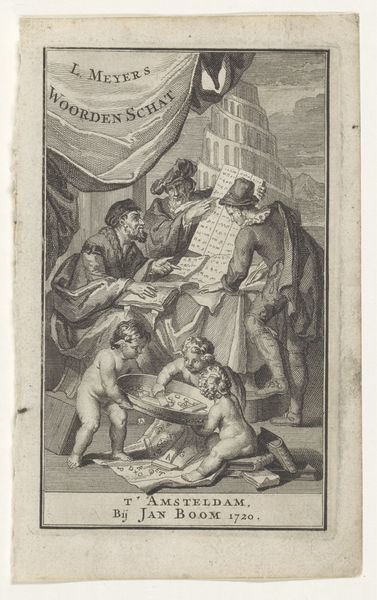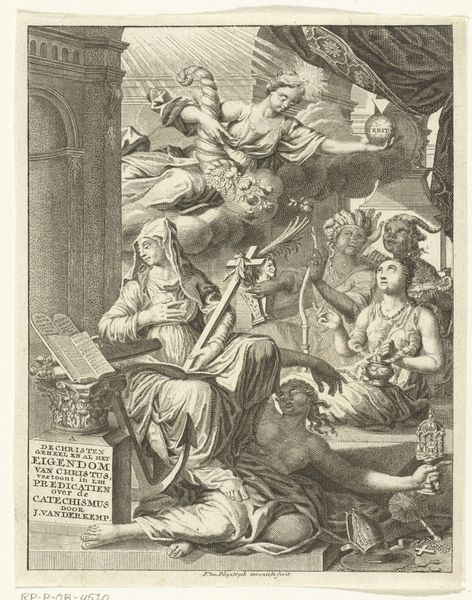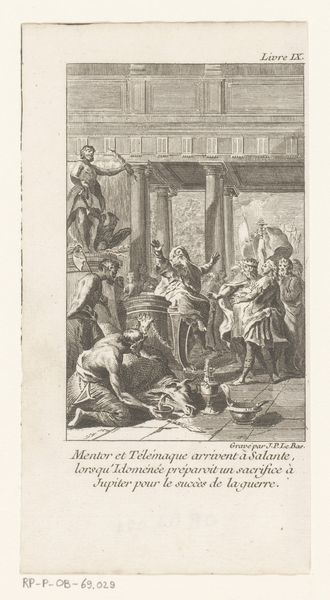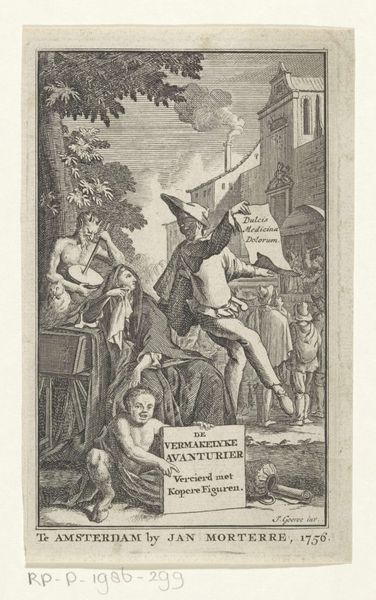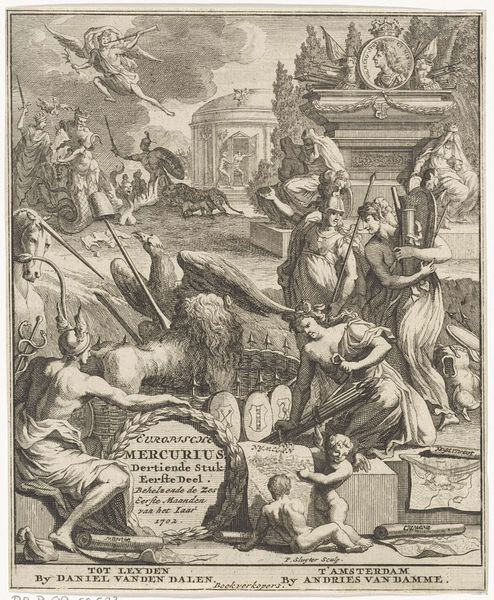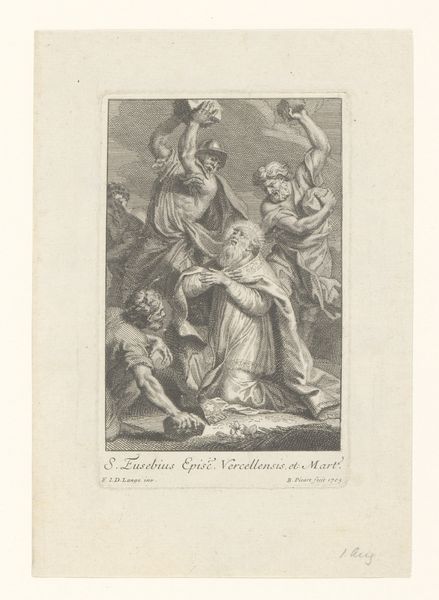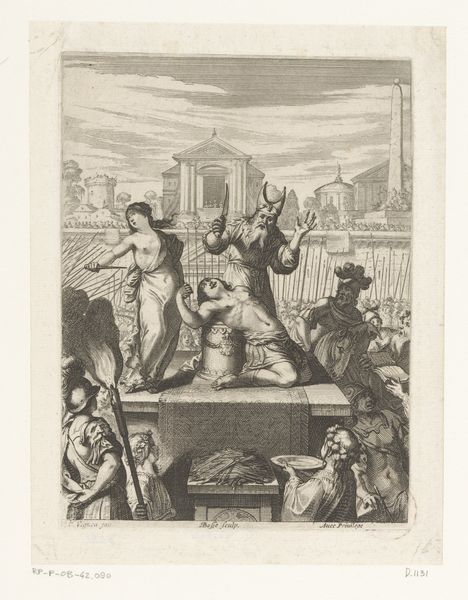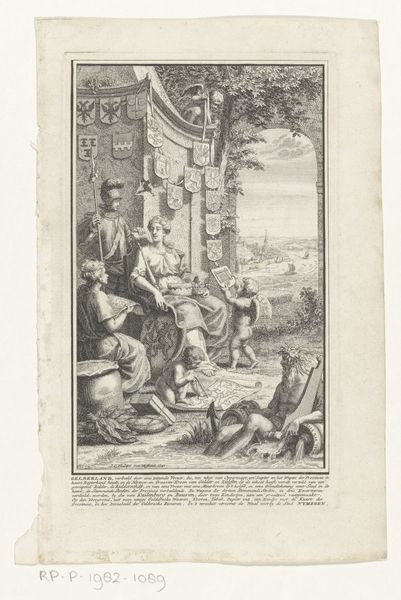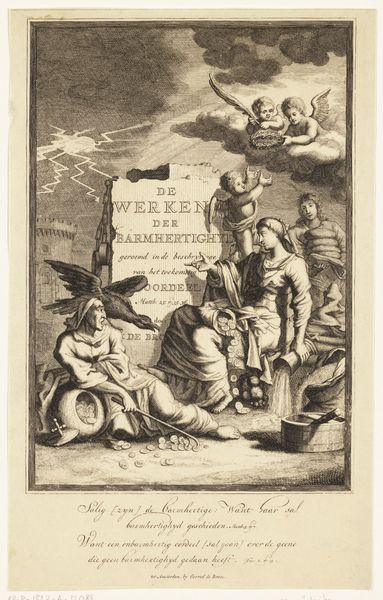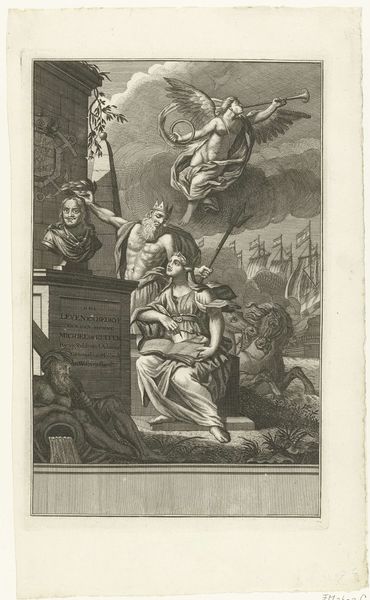
print, engraving
allegory
baroque
engraving
Dimensions: height 137 mm, width 80 mm
Copyright: Rijks Museum: Open Domain
Curator: This intricate engraving, “Minerva lauwert de Tekenkunst,” dating back to 1733, comes from the hand of Jan Caspar Philips. It's currently housed in the Rijksmuseum. Editor: It strikes me immediately as a work steeped in the visual language of its time. The composition feels deliberate, each figure meticulously rendered. Curator: Absolutely. Philips’ technique reveals much about the printmaking process of the period. Engraving on a metal plate requires a precise, almost industrial level of craftsmanship. This wasn't just art; it was a highly skilled trade. The density of lines and textures conveys depth and volume despite the limitations of the medium. Consider also that as a print, its purpose was circulation, the broad dissemination of ideas. Editor: Which in turn relates to its content and broader socio-cultural implications. Allegories like these, with Minerva, goddess of wisdom and strategic warfare, gracing the scene, reflect the prevailing taste of the elites and intellectual circles of the era. It’s not just an aesthetic preference but a statement of cultural authority, embedding the fine arts within a narrative of divine favor. The publishing information tells its own story: here is an artwork being distributed through specific booksellers and acting almost like an advertisement or symbolic gesture. Curator: And look at the supporting figures – all the classical allegorical characters that made works such as these so widely appreciated in those circles. Even today it serves as evidence of the skills, practices and tools deployed in Philips’s studio. This kind of allegorical print reinforced societal values while offering artisan’s opportunity for refinement and experimentation within the constraints of reproduction and the art market. Editor: Thinking about the role such images played and where these prints would appear helps us connect this object to a wide network of patrons, tradespeople and institutions operating with different social values, aesthetics and assumptions than ourselves. It’s so striking to recognize an artwork acting as both promotion and declaration, even today.
Comments
No comments
Be the first to comment and join the conversation on the ultimate creative platform.
